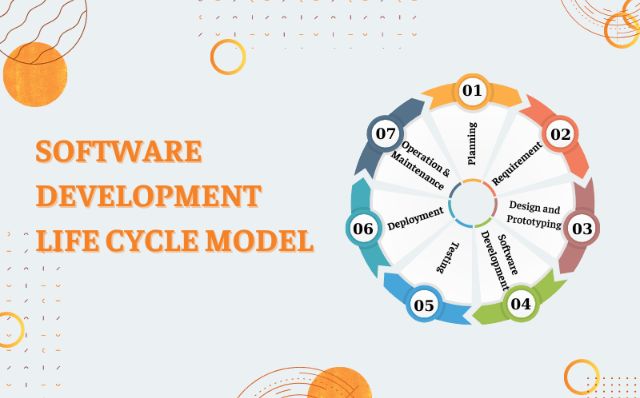|
Getting your Trinity Audio player ready...
|
To develop software applications, you have to go through some stages. Those stages are referred to as the software development life cycle. Each stage will be classified as a task and assigned to different people. When organizations want to build a big software application, they employ the use of the Software Development Life Cycle (SDLC). As the cycle can consist of six steps in some settings, it can consist of eight steps in others. It depends on the way it is carried out. It is always within that range.
The steps are planning, designing, document, deploy, requirements, build, test and maintain. In some cases, two steps are combined to be one. Some people even go as far as skipping one or two of the steps. With the use of SDLC, you can measure and improve how you intend to carry out a project. Analysis of each stage can be carried out as you progress. What is SDLC (Software Development Life Cycle) Phases & Process? You will learn more about it as we go further.
How Software development life cycle is carried out
Software Development Life Cycle comprises all the tasks you have to carry out to build software. As it can be used to reduce waste, it can help make the development process faster. When a software project is constantly monitored, it will stay on track. It will even be an investment for the organization. When these steps are used in companies, they are further classified into various units. As research can be part of the planning process, analysis can also be a part. You can even combine some of the other steps to become one.
What is SDLC Phases & Process?
1. Planning
While working on the planning process, the terms of the project will be examined. The steps involved in the planning phase are calculating labour costs, setting target goals, selecting project teams and structuring the leadership. In some cases, feedbacks gotten from stakeholders are included in the planning phase. Stakeholders are the people who make use of the application.
Feedbacks can also be gotten from customers, experts, developers and sales representatives. Planning includes the scope of the application to be developed. Courses to be treated will be outlined and provisions will be made to create great software.
Hire What is SDLC (Software Development Life Cycle) Phases & Process
2. State requirements
Stating requirements is often considered as part of the planning stage. As it helps to state the purpose of an application, it will also state the requirements needed to run the application. If you’re creating a text messaging application, it must have an option to connect with people.
In a case where you’re creating an inventory program, there must be the presence of a search feature. Resources needed to create an application are also part of the requirements. To handle the operation of a manufacturing machine, you might need to build software.
3. Design and Prototyping
To craft the way a software application will operate, you have to work on the design phase. Some of the most important aspects in this phase are listed below
User interface
It is used to design how customers will communicate with particular software.
Programming
Apart from the programming language, the methods used in creating solutions through the application are handled here.
Security
It includes the steps taken to keep the application safe.
Architecture
This includes a programming language, design, organization practices and how templates are used.
Platforms
The platform to use the application will be determined here. The available platforms are apple, windows, consoles, android and Linux.
Communications
It determines how the application will interact with the server or other assets.
4. Software development
This is the stage where a program will be written to create the software. If the software development is seen as a small project, it can be assigned to a single developer. On the other hand, large projects should be handed over to a team. To assign everything well, an access control application should be used. It will help you to easily track changes to your code. They can also be used to make different projects compatible.
5. Testing
Before you release an application for use, you have to test it well. Just like security testing, you can always automate the majority of your testing. While trying to test other things, you have to make use of a specific environment. To get complex deployments, you can make use of a production environment.
By testing, you can set the way the function works. You can test different aspects of your application and make them work together. That is what is called a performance test. It will help reduce lags whenever your app is running. After identifying bugs in your program while software testing, you can easily remove them.
6. Deployment
This is the phase where applications are released to users. The majority of the time, companies automate this phase. As the deployment phase can be a payment portal, it can also be a download link. It can even be downloading through another application on a computer or a smartphone.
In some cases, the deployment phase can be complex. For instance, you might find it difficult to upgrade the database of an organization to an application. The reason is that the database must have been using other systems. Even though it can be upgraded, it will take a lot of time and energy.
7. Maintenance
This is the last stage of the development cycle. After developing the application, it is put into use. Even after the application has been handed over to the user, it still has to be maintained. As time goes by, users might find out bugs in their application. Such bugs can be missing during testing.
Since there is a need to fix the error, new development cycles would start.
Apart from fixing bugs, some models are working on release new features in the future. One of them is the iterative development plan.
SDLC Models
Waterfall
The waterfall model is one of the best methods of development available. After finishing a step in the model, the next step would start immediately. The waterfall model has been tested over time. It doesn’t fail. You can even examine each phase and check for its progress and quality. There is a limit to how you can speed things up in the waterfall model. Before you start a new phase, you have to finish the old one.
Iterative
In this model, a basic version of the application will be developed initially. Then they can go through the application and make improvements. All these will have to be in stages. The majority of the time, the Iterative model is used in large projects. Within a short time, an application can be developed to meet the needs of the user. You have to be careful while using this scope. You might be at risk of using resources that you didn’t plan to use.
Agile
In the agile model, the need of customers is the priority. As the focus of the model is on user experience, it also focuses on user input. Since it is focused on the right things, it doesn’t encounter problems that old applications usually encounter. It is easy to use.
Customer feedbacks are even examined and used to improve applications. Due to the changing market, new software cycles are frequently launched. To communicate and work efficiently, only strong teams are used. When too much reliance is placed on customer feedbacks, projects are at risk of going off-track.
DevOps
In this security model, operations are included as a part of the development cycle. Just like in the agile model, the usability of applications is improved in this stage. The same thing applies to the relevance of applications.
In the DevOps model, feedbacks are gotten from application users. This feedbacks are mainly about design and implementation. Even though DevOps is a great model, it has a few disadvantages. One of them is that it requires frequent communication. Since frequent communication will result in additional costs, you can reduce the costs by automating some aspects of the development process.
Other Models
Apart from the Software Development Life Cycle (SDLC) models above, there are still other models. For software development, some companies make use of LEAN manufacturing processes. There are various types of waterfall models. One of them is V-shaped development. Unlike the other types of waterfall models, V-shaped development uses testing, validation and verification.
When it comes to spiral development, it can choose models for every step involved in the development process. As some of these models can be used in small-scale projects, others can only be used in large-scale projects. Before deciding on the one to use, you have to study your project and estimate the time it will take you to finish.
Software Development Practices
Apart from Software Development Life Cycle (SDLC models), there are other practices you can carry out to improve your project. Some of them are discussed below:
Source control
To keep your working code safe, you can use source control. It is a useful security plan. To use source control, all your working code should be in one place. You also have to ensure that it has secure access. As it can be a physical room where files are kept, it can also be an online space. With source control applications, you can monitor the work done by individuals. The same thing applies to work done by teams. Storage is also important. As you proceed with your project, you have to store your development progress frequently.
SDLC Management Systems
The SDLC management system doesn’t only manage the stages of a development cycle. It controls the cycle. It also helps to make the whole project transparent and easy to review. Other things that are added are analytics, work management and the likes. When some aspects of the cycle are not functioning, they can be easily improved.
Integration
With the use of continuous integration, you can check compatible components. A long time before people started to use continuous integration, teams used to build programs independently. When such programs are combined, there will be challenges. By employing the use of continuous integration, all the teams working together will use the same programming language. They will also use the same library. Continuous integration can also help avoid duplicated work.
Conclusion
As SDLC reveals what is happening to you, it also shows you where you can make your development process better. Just like business processes, you can improve the way you develop software with SDLC. You can even view your project from time to time and track its progress. Even though all the SDLC models are effective, you shouldn’t just choose anyone for your project. You have to consider your project needs and select a suitable model.


